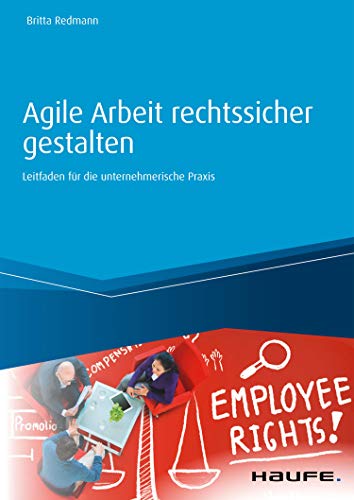Home-Office-School Balance – is it possible?
The model of working from home, which many people from afar were striving for a year ago, has quickly turned into a model that, like so many things, has both light and shadow. The home office model experiences an exponential complication when it suddenly 1. applies to all family members and 2. home schooling tasks are added.
It does not take much imagination to realise (even without being affected oneself) that this cannot work well. How are you supposed to work at the same time in your actual job and as a teacher of your own children? How can you keep your children quiet for as long as the usual office hours demand? How can you stand the feeling of being trapped, especially in winter? How to meet the children’s urge to move, how to meet the demands of deadlines that can only be influenced to a limited extent?
Home schooling and home office are a difficult match. Still, are there hacks and tricks that help, that work? Together with my social media community, I went in search of good examples, of experiences for the home-office-school balance.
Home Schooling – Definition
Home schooling does not mean playing school at home. Schooling is tailored to one person teaching a subject to 25 children who have something completely different on their minds in a given time. Home schooling works differently. Here, children are largely left alone and explore the world themselves – they learn situationally what interests them out of the current and very individual context of their lives. Parents are only marginally involved. The extreme form here is “unschooling”, in which there are no regulated lessons or tasks and exams.
We are far removed from this free form of learning in the current “emergency situation”. For what is about to be practised in this country is the shifting of lessons to the home. In the ideal case (if we start from the familiar teaching process), the child thus has video conferences and assignments according to a digital mirroring of the timetable.
In reality, it tends to be just tasks that need to be worked through. Most parents know more forms of communication and exchange platforms in their exchange with the schools than they would ever have felt necessary in their jobs. The children are primarily dependent on how well their teachers implement distance learning (which, by definition, would not require home schooling) – the less this works, the more the parents are called upon. The very definition of what is actually supposed to take place at home (as the only safe component) is therefore highly unspecific.
Home Office – the Role of the Employer
In most companies, home office is thought of in a similarly narrow way as home schooling. We tend to transfer familiar patterns to new situations. On the one hand, this is absolutely right – because patterns and habits give us security, reliability, we can trust them. In times of crisis, this is more important than ever, when the world around us is no longer the way it used to be, the way we know it, the way we want it to be.
And yet we have to say goodbye to the 9-to-5 job. From just mirroring the familiar workplace to the desk at home. Especially managers and employers have to! Employees in the current situation are not freely plannable resources within known working hours. Until recently, the desired goal seemed tempting for many: you work when it suits you, when you want. Now that it is at least partially possible, it makes people feel insecure. It is a particular burden for those whose work schedule suddenly no longer includes a 40-hour week, but one that easily adds 20 hours of school on top of it.
Employers can support this by clearly signalling and welcoming the fact that fixed working hours are not a must. Communication, on the other hand, is a must! Employees must be able to address their needs and employers in return must have an open ear for what moves the team beyond the job. Viewing the employee not as a human resource, but as a human being – that is what this time can teach us, and we would like to keep it that way in the future. Becoming a community of solidarity as a team would be a good goal at present. It should not be forgotten that workers without children also have needs. Extending the antennae in all directions is what the leaders have to do. All the better if there is diversity here, too, and thus a greater understanding for different life situations.
Special solutions such as the parents’ afternoon, the donation of overtime or temporary working time reduction models can already be found at sipgate, at Cisco or also at Gothaer Versicherung.¹
Practical Tips “from the Kitchen Table”
How can a home-office-school balance be realised? The feedback from my “peer group” shows: it needs structure, structure, structure. This is dictated by schoolwork, fixed meetings in the office and the needs of the children. Parents – even more than usual – often get a raw deal. This makes it all the more important to have a weekly schedule in which everyone – depending on the age of the children – agrees on times together. Work, school and free time. Visualisation creates order and transparency, the visual ticking off of tasks creates a shared feeling of having achieved and completed something.
This is how Roger Hubschmid does it: “Structure is the be-all and end-all. Parallel hardly works, sequential better. Ideally, two parents should take turns. More self-study for the children, i.e. setting goals and enabling them to acquire the knowledge themselves. Oh yes, unfortunately there are only 24 hours in a day. You also have to accept that you don’t have the same amount of free time, because as a parent you also have to schedule home office at off-peak times from time to time. Home office will certainly not work for 8 hours at a stretch, but for example in blocks of 4 x 2 hours. Or schedule mornings and afternoons. As I said, structure. But each community has to find the structure for itself. Not everything is suitable for everyone. The employer should also show flexibility. Not everything is easy, but still doable. But with 2 x 100% working people it is a real challenge, I have to admit”.
“Actually, we don’t have any tricks”, says Heike Rosenberg. “We take our time to tackle one issue at a time. My dear colleagues understand when I mute briefly to answer a question for K1. If we talk to others online at the same time, headphones help”.
Jutta Cook has set up a home co-working space: “I put the folding table in my study for the child. That way he can see when he can talk to me and I can usually respond directly when he needs something. For calls we both use headsets, just like in the office”.
Susanne Braun-Speck shares her experience: “Well, everyone should have their own desk – a kitchen table for everyone is perhaps not the best solution. 🙂 I have been working in a home office for ages and when my child was small, I often had a babysitter in the house after daycare. Expensive in the long run, but helpful!”.
Not easy to realise in times of contact restrictions, but creating free space is an absolute must! In general, the topic of space is important – both physically as one’s own work and living space as well as psychologically as free space and, in a double sense, as play space.
Miriam Lerch already recorded a podcast on the topic during the first Lockdown in March 2020 (unbelievably, we will soon have a year of “experience” to show for it…), which has lost none of its topicality. Here she deals with the topics of creating routines, work organisation and communication. In addition, she has also started a collection of “pedagogically valuable” activities for children.²
All parents agree on one point: what one considers a meaningful activity – that varies greatly from person to person. The digital times of children have necessarily become extremely longer. This should not be demonised under any circumstances, and certainly not commented on from the outside. Jo Kristof therefore finds it extremely important to “make a decision for yourself about what can be left behind, so that you don’t feel bad every time because you simply can’t fulfil all the roles/demands/expectations at the moment. What that is must be a very individual decision”.
In addition to working and learning itself, however, “the rest” of family life also needs to be organised. After all, where do school and job end and leisure and pleasure begin when everything happens in one place? I really like Dr. Emily Abold’s idea on this: “We made a home schooling contract in which parents and child each write down 3 things that are important to them and must be adhered to (e.g. We don’t shout / child gets dressed by XY o’clock etc). If everyone fulfils their contract, there is a pre-defined ‘reward’ at the weekend.
We all work well with positive stimuli, don’t we?! Motivation and incentive theory learned at home. 🙂
10 Hacks for Home-Office-School Balance
So how can the theoretical constructs of home office and home schooling in pandemic times be combined with practical experience? Even if patent remedies are out of place at this point, even if plans currently have a half-life below the breastfeeding span of children and even if, unfortunately, not every employer is taking advantage of the leeway in terms of cooperative home-office-school balance: the 10-point plan from the great ideas of my conversation partners.
- Organise digital home schooling like an analogue office: filing, inbox, to do, schedule, order lists, appointments, calendar with conference dates, wall calendar.
- Keep in mind that children do not think strategically – short planning horizons help everyone stick to what has been agreed.
- Plan (analogue) time-outs together in the evening and at the weekend. Paint, do puzzles and handicrafts together, but also fold laundry together, sow and care for plants, cook, have a bathing party, go for a walk with mini rally tasks, let off steam by playing sports together (skipping ropes can be used immediately on the pavement), go on a night hike with a torch, go to the drive-in cinema…
- Communicate your situation to colleagues and employers – again and again! Not as complaints, but as facts. Demand structure instead of sudden meetings.
- Redesign your common workplaces again and again – with self-painted pictures and photos.
- Keep order together. Mentally close off the home office-school place “from the outside” at fixed times. Even if it’s a blanket that you put over the chaos.
- More than ever: when eating, keep all digital devices switched off and out of reach.
- Please have the courage to be imperfect!
- If necessary, make use of external counselling services and the extra childcare days.
- Make plans once a week for the time after Corona. Write down the plans and then seal them in a common dream jar or send them on a journey as a boat on a river nearby.
And of course: stay healthy!
Conclusion
Despite all the positive vibes, thoughts and hacks, it remains clear – everything at once is not possible and a home-office-school balance will not be possible everywhere. “Depending on the age of the children, you might have to realise that you just can’t do both at the same time. In our case, there are 4 hours of school and household work on the side in the morning, and I am in the office in the afternoon and possibly in the evening or at the weekend”. Katharina Lotter has significantly reduced her working hours. And Antje Tomfohrde’s tip says something similar: “Work in the evenings or at other unusual times. I find the English teacher at K2 ingenious, who also does video conferences in the afternoon sometimes”.
What keeps me going:The responses say it clearly – it is the mothers who organise home schooling, who restructure, who reduce working hours, and although there are certainly exceptions, the almost exclusive comments from women here speak volumes. I take my hat off to this double burden, but I also want to appeal more than ever for a change in thinking. Because if that doesn’t happen, we may create a digitalisation push in terms of working methods, but not in terms of equality. This will do lasting damage to our labour market – even more than the lack of tools or the educational gaps of children (who, incidentally, experience a very one-sided role model).
The new world of work is becoming digital – all the more it needs empathy, emotion and diversity.
Notes (some in German):
[1] https://www.zeit.de/arbeit/2021-01/corona-lockdown-eltern-arbeitgeber-kinderbetreuung-homeoffice
[2] Podcast von Miriam Lerch
Many thanks to Roger Hubschmid, Heike Rosenberg, Jutta Cook, Susanne Braun-Speck, Miriam Lerch, Jo Kristof, Dr. Emily Abold, Katharina Lotter und Antje Tomfohrde. You can easily follow them on LinkedIn.
Heike Rosenberg has published an article here in the t2informatik blog: The development of skills
Jo Kristof also: Modern leadership: When nothing works as planned
And Antje Tomfohrde too: Candidate Experience
Britta Redmann has published various books in German, most recently “Agile Arbeit rechtssicher gestalten”. Here you can find an overview.
Britta Redmann has published more articles in the t2informatik blog, including:

Britta Redmann
Britta Redmann is an independent lawyer, mediator and coach and is responsible for HR & Corporate Development at a software manufacturer. She is the author of various specialist books. As a human resources manager, she has accompanied, managed and implemented organisational developments in various industries. Her special expertise lies in the development of organizations up to agile and networked forms of cooperation. She transforms and implements modern concepts such as agility, work 4.0 and digitalisation in terms of labour law.



